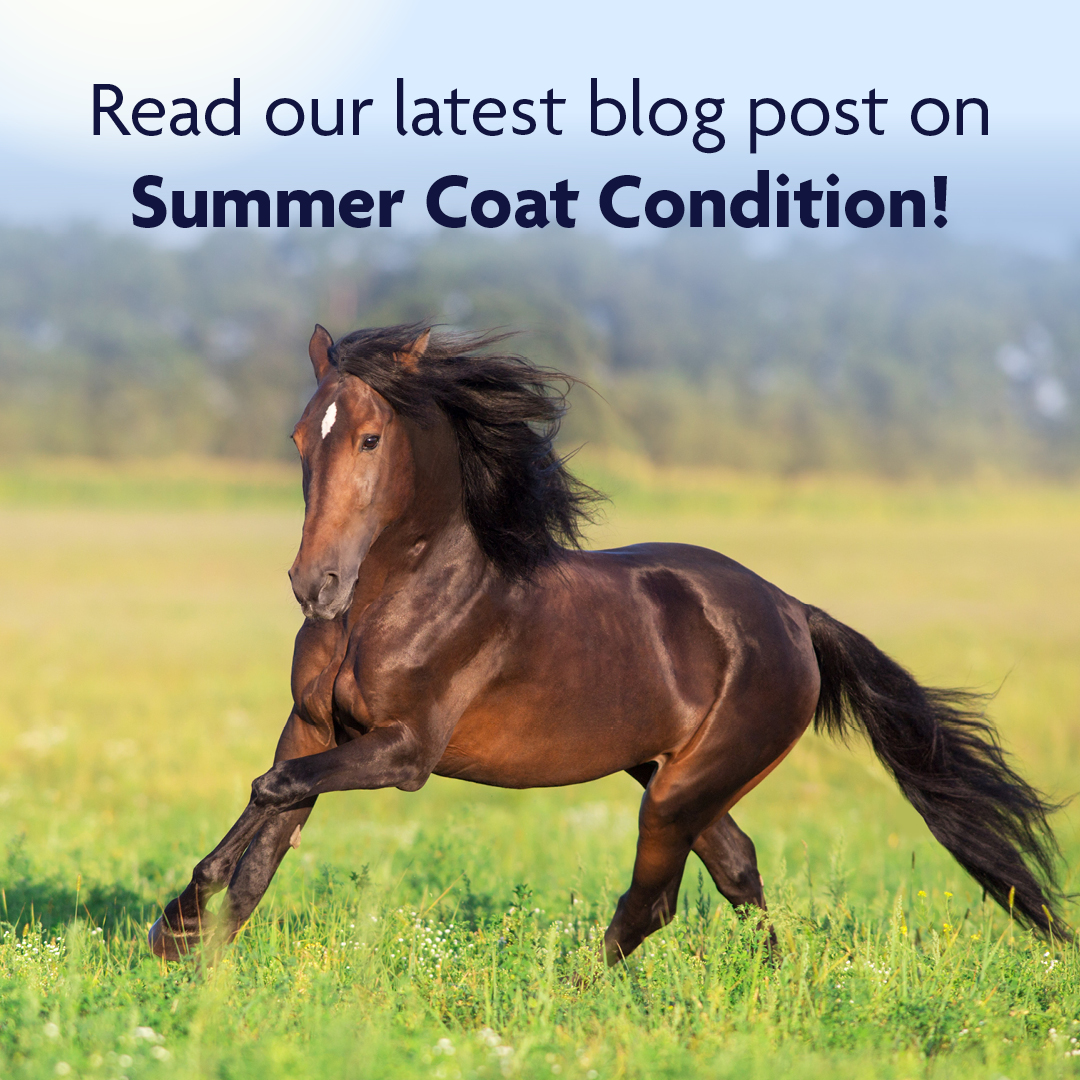Summer weather, poor nutrition, and underlying health conditions can all have negative impacts on the our horse’s coats at a time when we long to see a sparkle when the sun hits them. We often associate shiny hair with good health and nutrition, but there is limited research into the levels of nutrients required to obtain a healthy coat. The NRC1
does however publish guidelines on the recommended amounts to prevent deficiencies and this is important because the literature2 available has noted that micronutrient shortages in Zinc and Copper can affect coat quality and colour. If you are trying to address coat quality from the inside out, and use the scientific evidence that is available, there are 3 core areas to consider:
- Ensure your horse’s diet is balanced - At this time of year, the micronutrient content in grass at pasture is variable. Providing a product to help ensure requirements are met daily, like a Balancer, vitamin and mineral supplement, or recommended amount of a concentrate feed will help ensure your horse’s nutrient needs are met each day. Protein, and particularly the amino acids Lysine and Methionine, as well as micronutrients like Zinc, Copper, Selenium and Biotin will support skin and coat health. It has been noted that the Copper and Zinc levels in the southern part of England are often low in pasture3. Copper in particular supports the enzymes that form the strengthening cross-links between collagen and elastin molecules in connective tissue (in particular the Collagen in the hair that helps build Keratin), and it has been widely noted that a deficiency in Copper will cause a bleached, yellow tinge to the hair shaft that will also be shorter and more brittle. Occasionally, white or brown spots around the muzzle and eyes4 will also be present. The role of Zinc is more complicated as it requires Copper for its absorption, but it is also involved in the cross-link formation of the hair shaft proteins.
- Support normal digestion and hindgut fermentation - We know that a healthy hind gut will produce good quality levels of Volatile Fatty Acids and Biotin, which contribute to optimal health and subsequently a quality coat. Therefore, it is recommended to support optimal hindgut performance through the supplementation of pre and probiotics like Actisaf yeast, MOS, and FOS.
- Consider using a high oil product - Oil can help support a glossy hair coat, but liquid oil isn’t always easy to handle, a large volume is needed to achieve desired effect, and the oxidising effects of oil will not be counterbalanced with antioxidants if it is added in isolation. For these reasons, a “top-up” pelleted product like Build & Glow is often more appealing. This product contains added vitamin E (an antioxidant) in addition to a core blend of different oils that are extruded into pellets, resulting in a product with a high oil content without appearing outwardly oily.

References
- 1. NRC, 2007. Nutrient requirement of Horses, sixth ed. National Academy Press, Washington, D.C., USA.
- 2. R. Geor, P. Harris and M. Coenen, 2013. Equine Applied Clinical Nutrition, first ed. Sauders Elsevier Press, London, U.K.
- 3. https://www.brinicombe-equine.co.uk/is-your-grass-low-is-copper/
- 4. L. Mc Lean, W.E. Jones, 1983. Depigmentation- copper supplement therapy a case report. JEVS, vol 3, issue 6, pp 208-210.



